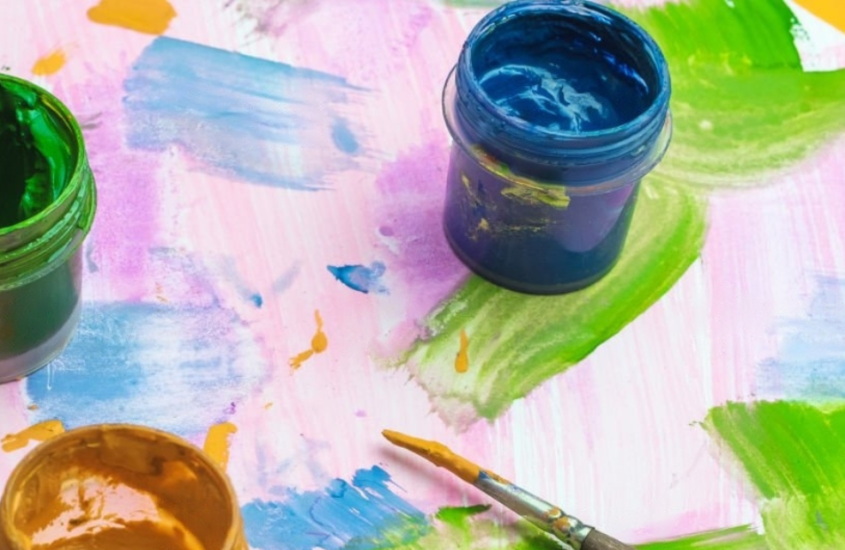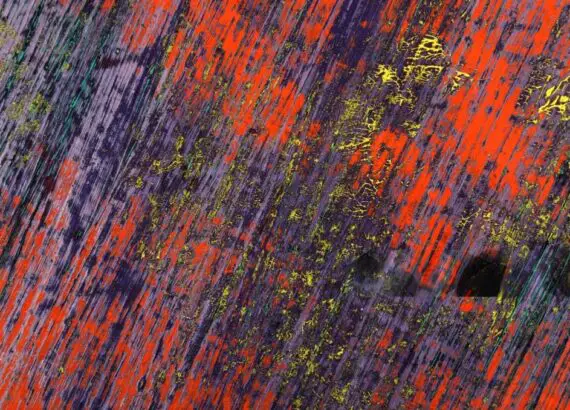Why is Oil Paint Better than Acrylic?

Introduction:
There are numerous mediums in the world of art, each with its own distinct qualities and characteristics. Among these, the debate between oil paint and acrylic has sparked debate among artists and enthusiasts alike. Understanding the benefits of oil paint is critical when deciding which medium to use for your artwork. In this article, we will look at why is oil paint better than acrylic paint and why it is worthwhile to investigate its possibilities.
I. Advantages of Oil Paint over Acrylic:
Oil paint has a number of advantages that make it a popular choice among artists. Its distinctive features contribute to the overall quality and appeal of the artwork. Let’s look at these benefits and see why oil paint is so popular in the art world and understand why is oil paint better than acrylic
1. Longevity and Preservation:
Oil paint is well-known for its durability and longevity. Oil paint, unlike acrylic, does not fade or deteriorate over time and retains its vibrancy and integrity. The slow drying process allows the colors to blend and settle, resulting in more stable and long-lasting artwork.
2. Blending and Layering:
Oil paint excels at blending and layering, allowing artists to create depth and texture in their work. The slow drying time enables smooth and seamless blending, allowing artists to easily achieve subtle transitions and gradients. Layering multiple colors improves the artwork’s richness and complexity by adding depth and dimension.
3. Versatility and Manipulation:
One of the primary benefits of oil paint is its versatility and manipulation capabilities. It supports a wide range of techniques and can be used in a variety of styles, from traditional to contemporary. Oil paint can be manipulated by artists using various brushes, palette knives, or even their fingers, allowing for expressive and experimental artwork. The versatility of oil paint allows for limitless creative possibilities.
4. Slow Drying Time:
Oil paint’s slow drying time is frequently cited as a significant advantage over acrylic. Unlike acrylic, which dries quickly, oil paint can be worked with for a longer period of time. This enables artists to work at their own pace, make changes, and refine their work over time. Because of the longer drying time, artists can blend colors on the canvas and achieve subtle variations.
5. Color Depth and Luminosity:
Oil paint has exceptional color depth and luminosity, making it ideal for capturing light and creating realism. Oil paint pigments have a higher concentration, resulting in more vibrant and intense colors. Oil paint’s natural sheen adds a luminous quality to the artwork, enhancing its overall visual impact.
Oil paint has a number of advantages that make it a popular choice among artists. It distinguishes itself from acrylic due to its longevity, blending capabilities, versatility, slow drying time, and vibrant color possibilities. Understanding these advantages allows artists to unleash their creativity and create artwork of exceptional quality and appeal.
II. Longevity and Preservation:
When it comes to longevity and preservation, oil paint has a significant advantage. Oil paint, unlike acrylic, has the ability to retain its vibrancy and integrity over time. This is due to the slow drying time of oil paint, which allows the colors to blend and settle more evenly. As a result, oil paintings are more stable and durable and can withstand the test of time. The colors stay rich and vibrant, ensuring that the artwork retains its allure even after years of display. As a result, artists who value the long-term quality and preservation of their artwork prefer oil paint.
III. Blending and Layering:
When it comes to blending and layering techniques, oil paint truly shines, giving artists unrivalled opportunities to create depth and texture in their artwork. Oil paint’s slow drying time allows for smooth and seamless blending on the canvas. Artists can create subtle transitions and gradients with ease, resulting in a harmonious and visually appealing composition.
Furthermore, oil paint has the distinct advantage of being able to layer multiple colors. Artists can increase the richness and complexity of their work by layering paint on top of each other. This layering technique gives the piece depth and dimension, creating visual interest and inviting the viewer to explore the different layers within the painting. Oil paint’s versatility in blending and layering allows artists to achieve a level of intricacy and realism that is often difficult to achieve with other mediums.
IV. Versatility and Manipulation:
Oil paint allows artists to be extremely versatile and manipulate the medium to suit their artistic vision. It can be seamlessly adapted to a wide range of artistic styles, from traditional to contemporary, making it a popular choice among artists of all genres.
One of the primary benefits of oil paint is the variety of techniques it supports. Artists can experiment with a wide range of artistic techniques, from classical realism to impressionism and abstract expressionism. Oil paint allows for intricate detailing, smooth brushwork, and bold impasto textures, allowing for endless experimentation and expression.
Additionally, artists can manipulate oil paint with a variety of tools, such as brushes, palette knives, and even their fingers. Each tool produces a distinct mark or texture, allowing artists to create one-of-a-kind effects and add a personal touch to their work.
V. Slow Drying Time:
When compared to acrylic, the slow drying time of oil paint is widely recognized as a significant advantage. Unlike acrylic, which dries quickly, oil paint remains workable for a long time. This characteristic allows artists to work at their own pace, make changes, and refine their work over time.
Because oil paint takes longer to dry, artists can approach their work more deliberately and leisurely. They can work on a piece in several sessions without worrying about the paint drying too quickly. This adaptability is especially useful for intricate or complex artworks that require careful planning and execution.
Furthermore, the slow drying time of oil paint allows for color blending directly on the canvas. Blending wet layers of paint together allows artists to achieve smooth transitions and subtle variations. This technique, also known as “wet-on-wet,” allows artists to create seamless gradations and nuanced color effects that are often difficult to achieve with acrylic paint’s fast-drying nature.
The extended drying time also allows artists to revisit their work and make any necessary adjustments. They can easily modify or refine specific areas because the paint does not dry too quickly. Artists who want to create precise and detailed artworks value this level of control and flexibility.
VI. Color Depth and Luminosity:
Oil paint is well-known for its exceptional color depth and luminosity, making it a popular choice among artists looking to capture light and create realism in their work. Oil paint pigments are more concentrated than those used in other mediums, resulting in more vibrant and intense colors.
Because of the rich pigmentation of oil paint, artists can achieve a wide range of hues and tones, allowing them to create visually appealing and dynamic compositions.
Oil paint has a natural sheen that enhances the luminosity of the colors. This inherent quality gives the artwork a radiant and glowing effect, making it visually appealing and engaging. The interplay of light on the surface of oil paint creates a captivating interplay of highlights and shadows, adding to the piece’s realism and visual impact.
Oil paint’s exceptional color depth and luminosity allow artists to bring their subjects to life, whether capturing the delicate nuances of a portrait or the vibrant hues of a landscape. Artists who want to create captivating and impactful artwork value oil paint’s ability to convey a sense of depth and realism through its vibrant colors and luminous qualities.
conclusion
why is oil paint better than acrylic? Oil paint offers a range of advantages that make it a preferred choice for many artists. Its longevity, blending capabilities, versatility, slow drying time, and vibrant color possibilities set it apart from acrylic. By understanding these benefits, artists can unleash their creativity and produce artwork of exceptional quality and appeal. Embrace the world of oil paint and elevate your artistic journey.
Remember to keep in mind safety precautions when working with oil paint, such as proper ventilation and using non-toxic materials.
Feel free to explore our related articles on oil painting techniques, color theory, and artist spotlights to further enhance your knowledge and skills. Happy painting!








